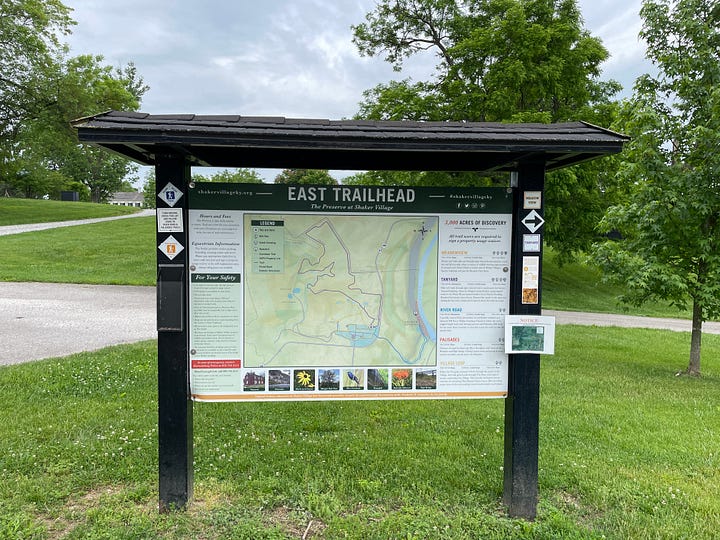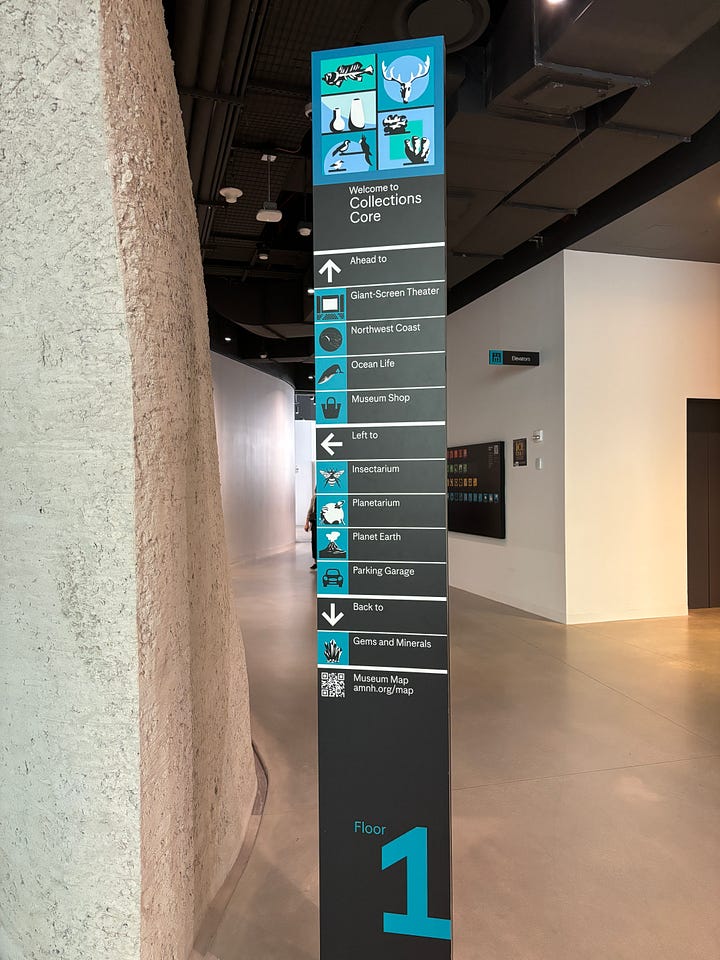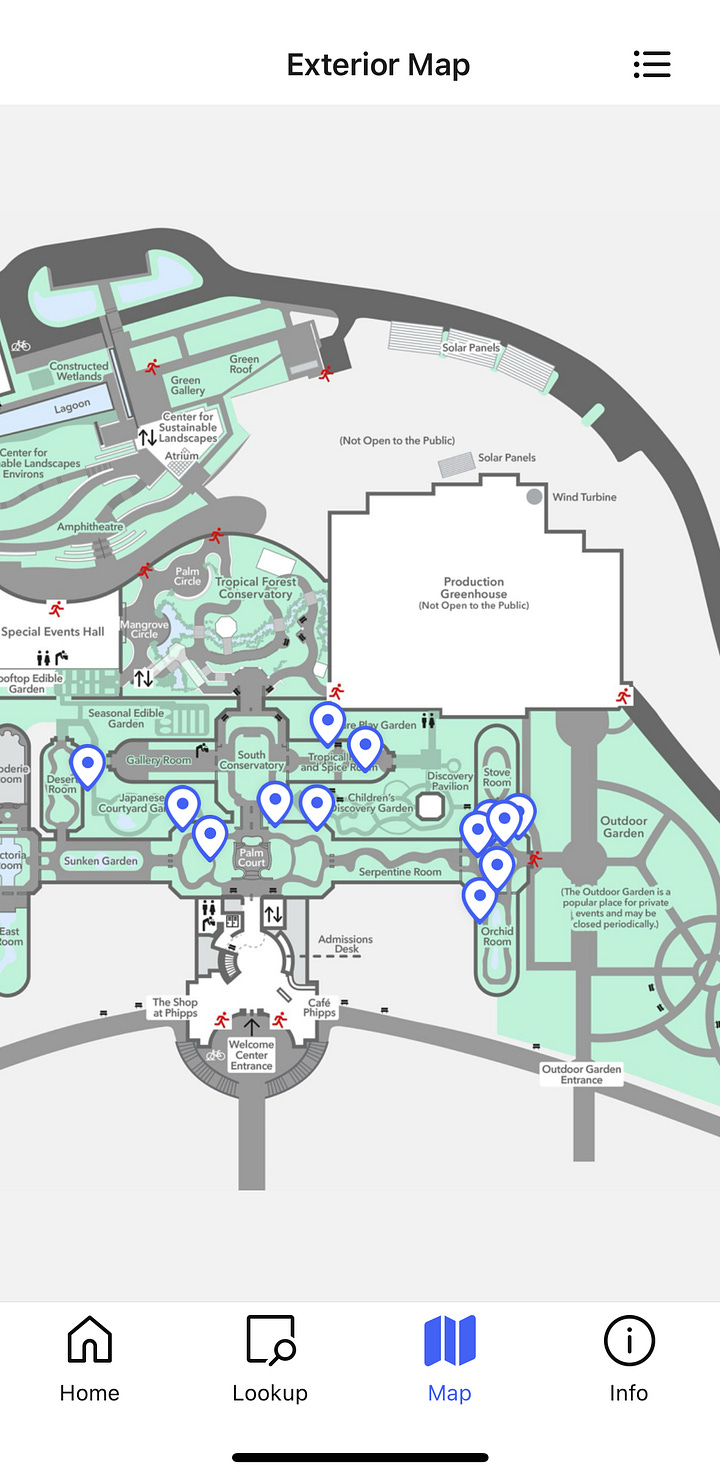
How do I get from the parking lot to the front door? Where do I buy tickets? How do I get out to the gardens? If visitors can't easily maneuver through and around a museum or historic site, their visitor experience deteriorates.
Wayfinding, the tools that help us navigate from one place to another are found in hospitals, college campuses, resorts, airports, recreation centers, and parks. And, yes, wayfinding is also a necessity for museums, battlefields, historic sites, and other cultural attractions. Have you noticed?
It happened to me!
As you read my list below, keep in mind that I'm someone very familiar with museums and I have a good sense of direction. However, these incidences did gave me pause, and made me a bit annoyed!
At a major art museum in Ohio, I walked up the steps to what looked like the front door and the doors were locked. There was no sign explaining that these doors were not used. When I did find the right door, there was no sign even stating the name of the museum.
At an art museum in South Carolina, after parking the car in the parking garage, I couldn't figure out how to get from the car to the museum - no sign.
At a historic house museum in South Carolina, I was walking through the expansive gardens and grounds, and couldn't figure out how to get back to the main house - numerous paths going in multiple directions but no signage. The map I'd been given was only of the house and nearby kitchen garden.
At a historic battlefield in Tennessee, after parking the car, I didn't know which direction to go to purchase my tickets - no map, no sign.
At a historical society in Michigan, the restrooms were tucked away in a corner with no signage to direct visitors towards them. I had to walk back to the front desk to ask where they were.
Wayfinding impacts the visitor experience
I'll admit, poor wayfinding, drives me nuts! To create a positive visitor experience, museums need to make the visit easy. I'm not suggesting wayfinding is inexpensive. I'm not suggesting that it's a simple undertaking. But if museums want to set the right tone for a positive visitor experience, wayfinding, navigating, finding one’s way through the site, needs to work from the moment a visitor arrives, until they walk or drive away.
Wayfinding includes all of the tools that help a visitor move through an environment. Think of how you make your way through an airport you've never been to using signs, arrows, and colored lines on the floor to find your gate, or the restrooms, or baggage claim, or a taxi. Museums often under-focus on the necessity of good wayfinding. They put up a few permanent signs here, a handout map there, a piece of paper with a few handwritten words taped to a door, and it's done, and done poorly.




Principles of Wayfinding
Who are the visitors? How old are they? Where do they get lost or turned around? What languages do they speak? Are there mobility or accessibility issues? After doing a detailed study, through observation and surveys, possible wayfinding elements put into place include:
Signage: Directional and informational
Maps: Downloadable, paper, permanent/stationary
Color coding: Distinct colors to differentiate zones or areas
Digital maps: Available as apps or at kiosks
Tactile or auditory elements: Braille, textured ground surfaces, audio cues
Architectural and environmental features: Design of the building and open spaces to direct movement
"The purpose of wayfinding," according to Soulful Creative, "is to educate and inform a visitor of their new surroundings to help familiarize themselves with the features, amenities and function of the space they find themselves in."
Wayfinding is not easy, inexpensive, or a quick fix. However, if museums want we the visitors to be happy, to have a positive visitor experience, to return to the museum, to tell their friends about the museum, they need to consider the importance of wayfinding.
Have you been to a museum or other cultural attraction where you had either a very good or a very challenging experience with wayfinding, navigating your way around the museum or grounds?




